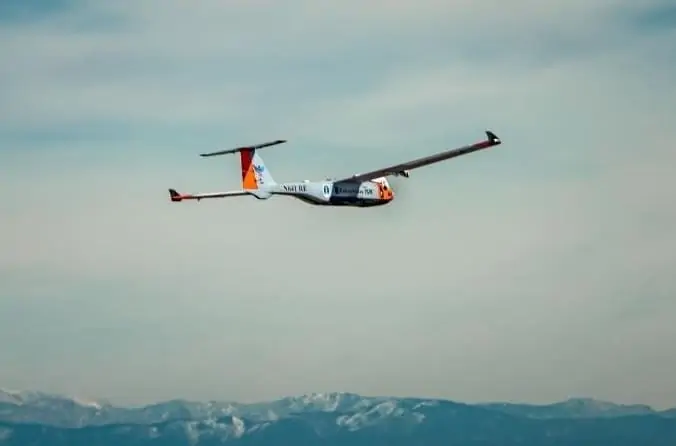
American Aerospace Technology (AATI)’s AiRanger UAS (unmanned aerial system) has been used to successfully demonstrate beyond visual line-of-sight (BVLOS) pipeline inspection as part of NASA’s Systems Integration and Operationalization (SIO) activities. NASA is working to tackle key challenges to enable routine commercial UAS operations in the National Air System (NAS), including development, integration, and certification of UAS and the technologies required for safe operation with manned and unmanned aircraft traffic in the NAS.
Target applications for SIO are focused on critical infrastructure missions, such as BVLOS patrols over pipelines, rail, road, and agricultural environments. The flights incorporate multispectral sensors with integrated machine learning and communications for real-time delivery of threats to damage prevention specialists via a cloud-based platform.
The demonstration saw the AiRanger take off from the Kern County Buttonwillow Airport near Bakersfield, California, and fly a pre-determined pipeline route from the Shafter, CA area heading westbound at 2,000 foot altitude. Complex coordination with the FAA, the Federal Communications Commission and local authorities was required for the flight to occur. The airspace authorization was established through the New Jersey Institute of Technology (NJIT) in cooperation with the New Jersey Innovation Institute (NJII).
The AiRanger, formerly known as the Resolute Eagle, is a rail-launch takeoff and skid landing UAS, powered by an 8 horsepower engine with a range of 75 nautical miles, a top speed of 100 knots and a payload capacity of up to 65 pounds, including fuel and sensors. For the demonstration, the aircraft was equipped with an AATI-developed Detect and Avoid (DAA) system that enabled it to fly safely in civil airspace alongside manned aircraft. The DAA system consists of dual airborne radar, ADS-B, tail and wing cameras mounted on the UAS. The system’s collision-avoidance radar provides an essential safety feature for integrating unmanned aircraft into civil airspace. The DAA system included an integrated Sagetech MXS ADS-B In/Out Transponder and ACAS-based DAA components.
According to AATI, data collected during the flight will be used to evaluate DAA and command and control (C2) technologies in support of future standards development and FAA certification guidelines. AATI’s partner for certification includes End State Solutions.
David Yoel, CEO of AATI, commented: “America is increasingly managed by artificial intelligence (AI) and served by unmanned aircraft. The AiRanger BVLOS UAS operates at medium altitudes carrying advanced sensors and AI. We are transforming the way that the nation’s 500,000 miles of midstream pipelines are patrolled, providing a fundamentally new and unique capability that changes the way we manage health, safety and the environment, respond to disasters, optimize operations and leverage human capital.”
Ali Etebari, PhD, VP at AATI and GM in charge of the AiRanger, said: “Our AiRanger platform, equipped with state-of-the-art cooperative and non-cooperative DAA sensing technologies, has the ability to provide a technological leap in safe operation of unmanned aircraft in Class G airspace in the NAS. Through collaboration with modeling and simulation experts at MIT Lincoln Laboratory and Johns Hopkins Applied Physics Laboratory, we are scientifically and methodically quantifying and mitigating collision risks.”
Kurt Swieringa, NASA’s SIO technical manager, stated: “The flight demonstration conducted by AATI highlights how unmanned aircraft can be used to detect pipeline leaks early, reducing the likelihood of environmental damage. This activity was a collaboration between NASA and AATI to make strides toward safe routine operations of UAS in the national airspace system.”
Charlton Evans, CEO of End State Solutions, said: “This demonstration will support key milestones in certification of UAS that don’t fall under Part 107 rules and require more rigorous certification processes so they can safely and seamlessly integrate into the National Airspace just like manned aircraft. This operation should inform standards about acceptable levels of safety. NASA’s support in promoting safe integration of UAS has served as a real catalyst for the industry.”


















